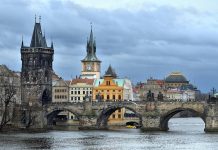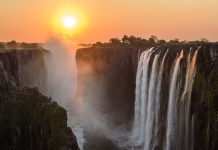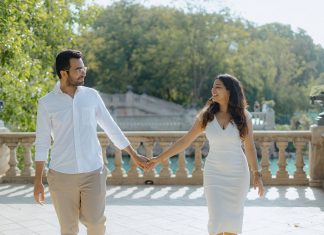Known as the pearl of the Indian Ocean , Sri Lanka lies like a teardrop, falling from the tip of India’ s South Coast . Once a little-known treasure, thousands of travelers stumbled upon the island by some’ fortunate accident’and so began to call Sri Lanka the Isle of Serendipity. Known for its white-sanded beaches and turquoise sea, its abundance of rare wild-life and rich foliage, its precious gem mines, its rolling hills carpeted with the best tea in the world, and its rich history and cultural heritage, Sri Lanka is a breath-taking get-away
Sri Lanka’ s population is a colorful mosaic of different ethnic and religious groups. The Sinhalese people form the largest ethnic group in the nation, composing approximately 74% of the total population. Sri Lankan Tamils form 18% of the population, and are concentrated mainly in the northeastern part of the country. There is a significant population of Muslims, who trace their lineage to Arab traders and immigrants and they are concentrated in the eastern provinces. There are also small ethnic groups such as the Burghers, of mixed European descent, and Malay people. Sri Lanka also has a unique community of indigenous people called the Veddahs. They are believed to be the first inhabitants of Sri Lanka and are thought to be related to the aborigines of Australia , the Nicobar Islands and Malaysia .
As a result of its ethnic diversity, Sri Lanka also is home to various religious faiths and is one of the few countries to celebrate every religious holiday as a national holiday. Buddhism is considered the official religion of Sri Lanka . The school of Buddhism followed in the country is the Theravada School and it was first brought to Sri Lanka in 2nd century BC by Mahinda, the son of Ashoka, the Indian emperor of that time. Buddhism is an important part of Sinhalese culture and the two are strongly linked. Hinduism is practiced by 18% of the population, whom are almost exclusively Tamil-speaking, as well as immigrants from India and Pakistan such as the Sindhis, Telugus and Malayalees. Hinduism is dominant in the Northeastern province, where Tamil people are in significant numbers. Christianity is practiced by 7-8% of the population, especially by the Portuguese and Dutch Burgher people. The Portuguese first brought Christianity to the island in 1618 when many Tamil Hindus and Sinhala Buddhists were encouraged to convert to Catholicism. While most Sri Lankan Christians are Catholics, there are also significant numbers who adhere to Dutch Reformed Church and the Anglican Communion. A significant portion of Sri Lanka’ s population is Muslim. The Muslims of Sri Lanka claim descendancy from the Arab traders who made Sri Lanka their home even before the advent of Islam. They can be categorized into two groups, the Moors and the Malays.
Sinhala and Tamil are both the official languages of the nation, with 80% speaking Sinhalese and 18% speaking Tamil.










